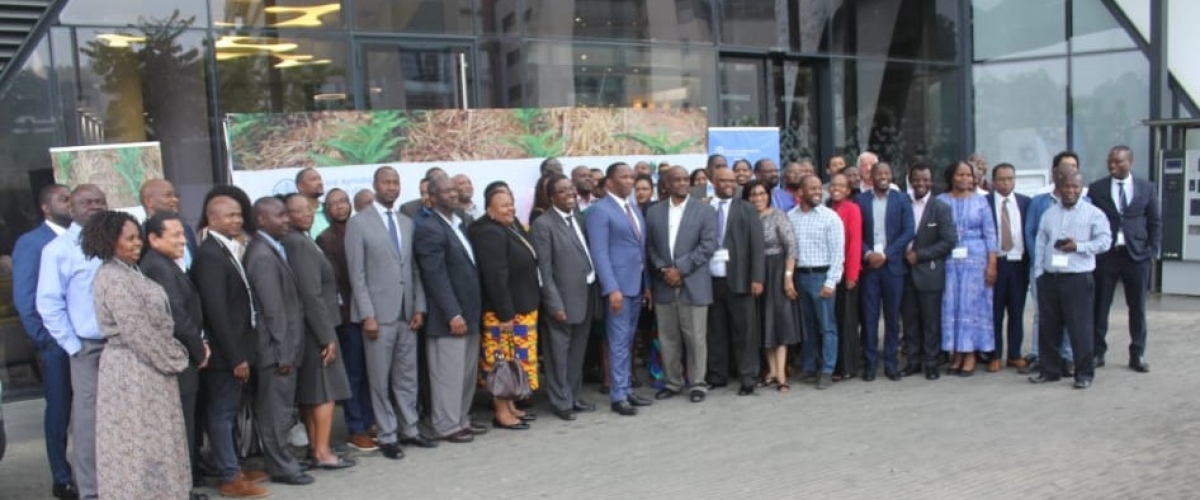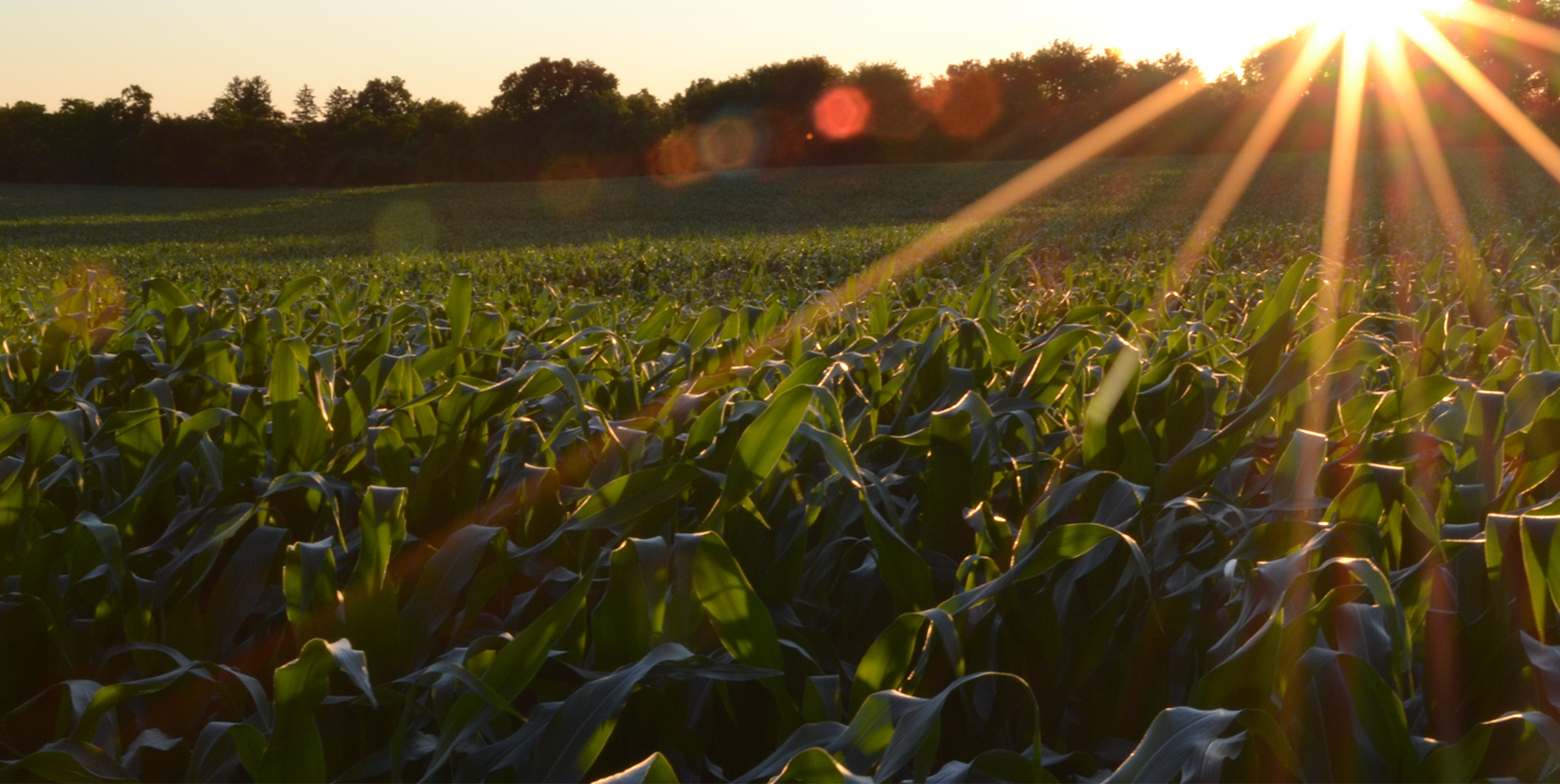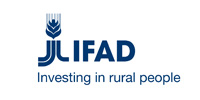
The impact of the Ukraine-Russia conflict, the COVID-19 pandemic and climate change shocks has increased the food and nutrition vulnerability of millions of people in Africa. It is clear from the Food and Agriculture Organization of the United Nations - (FAO), that the World Bank, and the UN World Food Programme (WFP) 's forecasted increased and severe food shortages globally due to the compounding effects of shocks on food systems.
To address these effects, the Centre for Coordination of Agriculture Research and Development in Southern Africa (CCARDESA) 's CAADP-XP4 Programme, in collaboration with the Food Agriculture Organisation (FAO), convened a multi-stakeholder dialogue under the heading “Mitigating the impact of the Ukraine-Russia conflict on fertilizer access for vulnerable smallholder farmers in Africa: Risks, Innovations, Good Practices, and Viable options” at the Hilton Garden Inn Hotel in Mbabane- Eswatini from 4th to 6th October 2022.
CAADP-XP4 Programme is funded by the European Union (EU) and is administered by the International Fund for Agricultural Development (IFAD). CCARDESA is implementing the CAADP-XP4 Programme in collaboration with the African Forum for Agricultural Advisory Services (AFAAS), Association for Strengthening Agricultural Research in East and Central Africa (ASARECA), West and Central African Council for Agricultural Research and Development (CORAF) and Forum for Agricultural Research in Africa (FARA).
The primary purpose of the dialogue was to facilitate sharing of good practices, innovations, and viable options and advocate for actions to ensure vulnerable smallholder farmers in Africa have access to fertilizers to safeguard their food and nutrition security amidst the evolving global environment.
The Minister of Agriculture, in the Kingdom of Eswatini, Honorable Jabulani Mabuza, officially opened the 3-day Regional Multi-stakeholder Dialogue where he stressed the need to make available and accessible fertilizer to smallholder farmers to guarantee their food security. He reminded participants that smallholder farmers are estimated to produce about 70% of the food in Africa (IFAD), but this food supply is now under tremendous risk. Surprisingly despite the smallholder farmers being net sellers, they see little or no profit from selling their products due to high fertilizer prices and low yield. Some may even become net purchasers themselves. Hon Mabuza observed that the impact of the Russia and Ukraine war was hitting hard on the SADC Region resulting in high food prices and affecting the global fertilizer market. He stressed that this is making it impossible to predict when and how things will be in the future, hence calling for innovative, lasting solutions for African food systems.
In his opening remarks at the dialogue, the CCARDESA Executive Director, Dr Cliff Dlamini cited the SADC Regional Vulnerability Assessment & Analysis (RVAA) , which states that 55.7 million people are already pre-disposed to food and nutrition insecurity in 2022/23. This is coupled with food systems still reeling from the impact of covid 19 and climatic shocks across the continent. Dr Dlamini said that these global shocks had put pressure on commodities at a global level, including precipitating fertilizer price rises of as much as 150% and the cost of fuels used for farm operations in most countries. Furthermore, key maize producing and consuming countries in Southern Africa directly or indirectly import a substantial amount of fertilizers from Russia.
Dr Dlamini noted that COVID-19, Russia/ Ukrainian war and Climate Change had profoundly impacted agricultural productivity in the SADC region. This has prompted CCARDESA, through a partnership with FAO, to provide a platform for member states to discuss and generate long-lasting solutions to the region that will enhance food security.
The Executive Director thanked the European Union, German Government and World Bank for funding CCARDESA Programmes. He also thanked the Kingdom of Eswatini for gracing the meeting with the presence of the Eswatini Minister of Agriculture. He also thanked FAO for co-hosting the dialogue with CCARDESA.
Speaking at the same event, the CAADP-XP4 Coordinator, Dr Podisi, presented on resilience building networks in Southern Africa. He also emphasised the need to restore soil health in the region by adding inputs and implementing practices that would enhance fertility. He also reminded the meeting on the need to re-orient Africa’s ways of producing food in alignment with the food systems concept aimed at minimising the negative impacts on the society and the environment.
The meeting reflected on the use of input subsidy schemes as a common mechanism used by most regional countries to promote access to technologies and inputs at affordable prices. The meeting noted the on-going regional efforts on harmonisation of the SADC regional fertilizer regulatory framework to aid smooth intra-regional trade and movement. The possibilities and challenges towards local production of fertilisers in Africa were discussed. Experiences were also shared on the use of regenerative agriculture practices such as the use of bio-innoculants to improve soil fertility and plant health. The merits and experiences of promoting conservation agriculture and need for mechanization of agriculture were explored. Information on the use of renewable energy sources such as solar power for irrigation at farm level in the wake of escalating fuel costs and to reduce greenhouse gases emission in agriculture was also shared.
The dialogue also learned that "the black soldier fly" is a bio-converter of waste into high-quality protein and soil amendment substrates. It has high-fat content, speeds up the composting process and is low in carbon footprint. Relatively easy to produce at the farm level.
Farmers also shared their experiences and survival mechanisms towards the post-effects of covid 19 pandemic, high fertilizer prices and climate change shocks. They cited the use of organic fertilizer (cattle manure and composting), proper water management practices and precise input application as some of their survival strategies used while dealing with the mentioned global challenges.
There cannot be food security without youth engagement. Youth and children's engagement in sustainable agriculture practices is the way to go. This was demonstrated during a field visit at a nearby Primary School where children are actively involved in sustainable agriculture practices. The participants saw the use of climate-smart practices like conservation agriculture for field crops and vegetable production, organic fertilizer, and integration of livestock and fruit trees in school gardens. It was an exciting and eye-opening concept that needs to be mainstreamed throughout the education sector.
During the meeting, the participants also toured the Motjane Rural Development Area (RDA), where Extension Services are offered to farmers. Services range from subsidized tractor hiring, free soil analysis, consumer science services. Demonstration plots for conservation agriculture and conventional tillage were toured on the RDA sites.
The meeting ended with concrete actions and recommendations to ensure increased and sustainable production by vulnerable smallholder farmers through improved access to fertilizers and soil health-enhancing technologies in the SADC. Participants recognized the general low fertilizer use in Africa and the need develop capacity for local production of fertilisers in the continent given the availability of the raw materials for fertilizer production.
The meeting recognized the need to educate farmers on the correct use of fertilizer and the need to improve access to soil testing facilities to guide the targeted application of fertilisers. The meeting underscored the need to increase the soil carbon for improved efficacy of fertilizer use and the need to promote tillage and agronomic practices that enhance the soil organic matter and soil fertility.
Among others, the meeting called for an urgent action to make fertilizer affordable and accessible to farmers given the current prohibitive prices and transportation costs and; need to decentralize soil testing services and develop area specific soil fertility maps. The meeting advised on the use of smart and targeted subsidies programmes to enable farmers to access fertilizers and consideration to the use of e-voucher systems for fertilizer distribution in government subsidy schemes.
Incentives to promote local production of fertilisers such tax incentives for importation of raw materials and access to capital by the private sector for setting up fertilizer blending plants and fertilizer distribution in far flung areas. Development and implementation of regulations on fertilizer imports to ensure quality and registration of products is important to mitigate bio-security risks of spreading pests and diseases especially with the advent of emerging bio-solutions.
Breeders were challenged to breed crop varieties tolerant to soil acidity, with low nutrient requirements and breeding for varieties with efficient nutrient capture and conversion traits. However, in the short term, the use of low-cost soil fertility management practices (legume inoculants, strategic legume –cereal rotations, use of animal manure, manure handling and storage, manure and fertilizer combinations and use of bio-fertilisers are some of the options that smallholder farmers can use. The current low dosage of fertilizer remains a key concern which is hampering production and productivity in Africa and demands key attention. More importantly, this coming growing season yields may decline further if action is not taken to improve access to fertilisers by farmers.
The dialogue participants included researchers, farmers, extension, private sector actors, policymakers, international cooperating partners non-Governmental Organizations, Government Representatives and International organizations, among others. The hybrid meeting attracted participants from East, West and Southern Africa. For Southern Africa, the physical participants came from Botswana, Eswatini, Lesotho, Malawi, Mozambique, Namibia, Madagascar, South Africa, Tanzania, Zambia and Zimbabwe.






